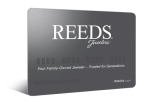This is a demo store. No orders will be fulfilled.

What To Watch
Your Most Common Timepiece Questions Answered
Watches are having a serious moment (no pun intended!). Whether you’re a novice collector or have been amassing a watch arsenal
for years, there’s always something new to learn when it comes to timepieces. Let’s take a tour of the basics and the buzz-worthy,
with a few fun facts thrown in for good measure.
Quick Links
Watch FAQ
Yes, depending on the style.
They can be, depending on the watch. Some brands are a better investment than others—now-vintage styles from Rolex, Cartier, and Omega can command impressive prices and see their value soar quickly in a short period of time. “Wrist shots” on social media are driving demand and popularity for collecting vintage watches, as are celebrities (a Paul Newman-model Rolex Daytona from the 1960s showed up on Ellen DeGeneres’ wrist on one television show, estimated value is whooping at around $250,000).
While vintage and pre-owned styles might be the rage right now, the new watches being produced today are tomorrow’s collectors’ items—so holding onto them for a long time is likely to increase your initial investment, if you choose the right brand and style. While the patina of watches from the 60s adds to their cool factor, today’s watches are made with astoundingly better materials (think indestructible ceramics versus the scratch-prone acrylic of yesteryear). So chances are your modern watch will (quite literally) stand up to the test of time.
There are three different types of movements that make a watch work—quartz, mechanical, and automatic. A quartz watch is battery operated, which makes the second hand move in individual ticks (interestingly, solar-powered watches like the Citizen Eco-Drive are considered quartz).
In contrast (and in lieu of a battery), a mechanical watch is manually wound and has a smooth second hand motion. The benefit here is that you never run out of energy (considering you wind it regularly) and there are no batteries to be disposed of for the environment’s sake. Mechanical watches can be traditional-looking and rugged (check out the Hamilton Khaki Field collection) or completely modern—Tissot’s mechanical T-Complication Squelette model shows off a skeleton dial, which allows you to see through to the inner workings of the watch.
An automatic watch uses the energy from the movement of the watch wearer’s wrist to automatically drive the mechanisms within the timepiece. With automatic function, the key benefit is longevity—so long as you wear it regularly so it has the ability to borrow your energy. This type of watch is offered by a range of brands, from Breitling and Bulova to TAG Heuer and Accutron.
We can trace the modern watch back to the workshop of a locksmith and clockmaker in 16th century Switzerland—Peter Henlein is credited with crafting the first watch there. And so an industry was born, and one particularly associated with luxury, precision, heritage and the epitome of detail. Today, a watch crafted in Switzerland can be called a Swiss watch and is held to an exceptional standard of quality, design, and craftsmanship. Luxury Swiss watch brands are now almost synonymous with cutting-edge technology and materials.





It depends on the extent of damage or what the issue is—many parts can be replaced and other issues fixed by our watch repair specialist. But if your watch was run over by a car, you may be out of luck. Check out REEDS Watch Care Plans, which cover many types of repairs and give you peace of mind every time you strap on your investment.
There are a number of reasons depending on the watch in question, but they usually fall into a couple of categories. At the top of the list is brand association and exclusivity—many watchmakers intentionally make limited production runs, which drives up demand and value.
But there are also quality details that affect the price—innovative technology takes time to research and develop, and some watches are meticulously (meaning slowly and painstakingly) crafted or finished by hand rather than on a machine’s assembly line.
And of course, there’s the material question. If your timepiece is encrusted in diamonds and gleaming in gold, obviously there’s going to be a higher price tag—and also a better chance of holding value into the future.
When you consider that watches function as more than just practical timepieces (they’re style statements and pieces of nostalgia, too) we don’t believe watches are going anywhere anytime soon. In fact, like we mentioned earlier, social media is creating even more interest and newbie watch collectors. There’s also the sentimental component of timepieces being passed down from generation to generation.
This isn’t a hard and fast rule and is really best determined by personal preference. Since most people are right handed and use that as their dominant hand, wearing the watch on the left wrist made more sense comfort-wise and also helped limit the risk of damage to the watch.
Waterproof is a misnomer—the industry prefers the term water resistant, because ‘waterproof’ implies a level of warranty that watches cannot obtain. These guidelines are issued by the Federal Trade Commission of the U.S. There are different levels of water resistance, ranging from basic humidity or drizzle protection all the way to 200m or 300m, making it suitable for scuba diving. Water can damage watches with lower resistance ratings, so it’s an important factor to consider and investigate based on your lifestyle and activities as you’re watch shopping.
A quality watch should last a lifetime, and with a little care and regular maintenance, it’s easy to achieve. First, make sure you’re avoiding water (based on your watch’s recommended resistance level) and any chemical exposure. Keep it clean by gently polishing and if it’s mechanical, make sure you’re winding it regularly. REEDS offers a Watch Care Plan that offers two years of repairs and service to keep your watch ticking like new—including repairs from bezel to band and clasp to crown. Find out more details here.


